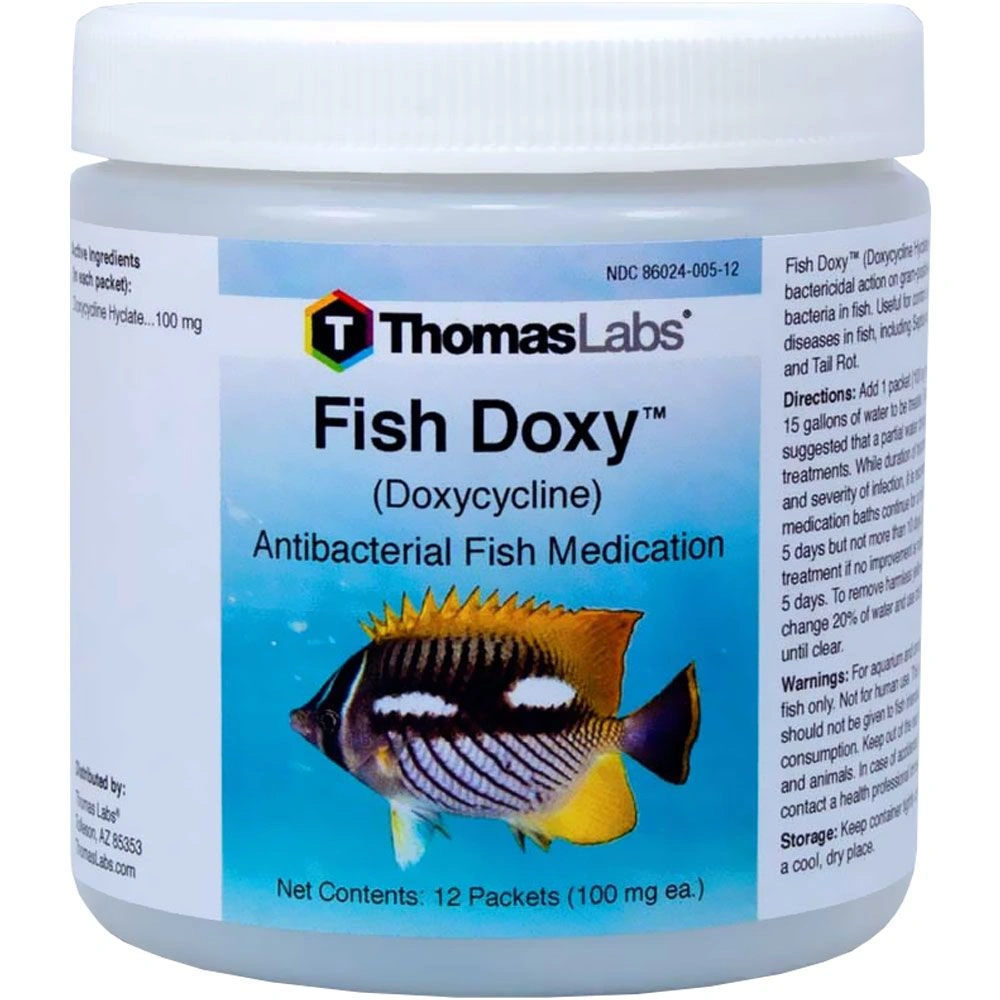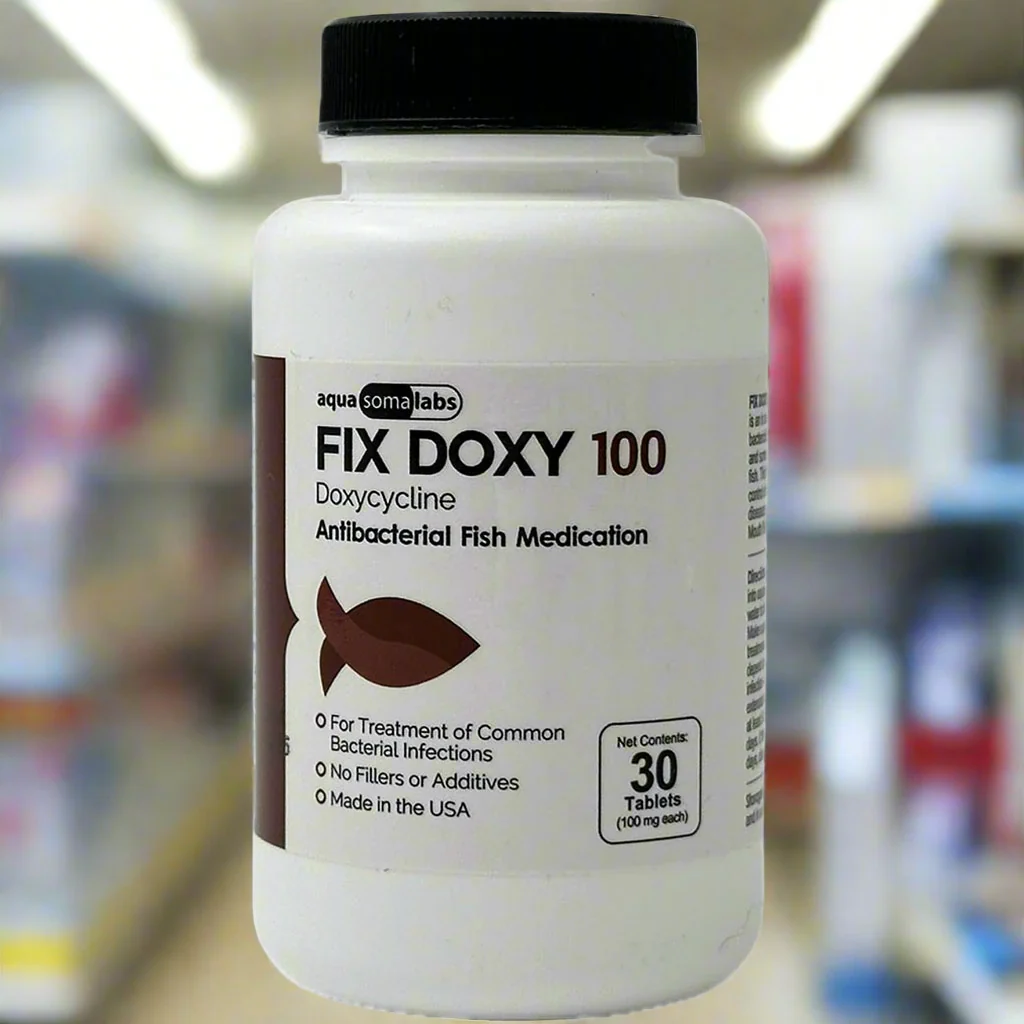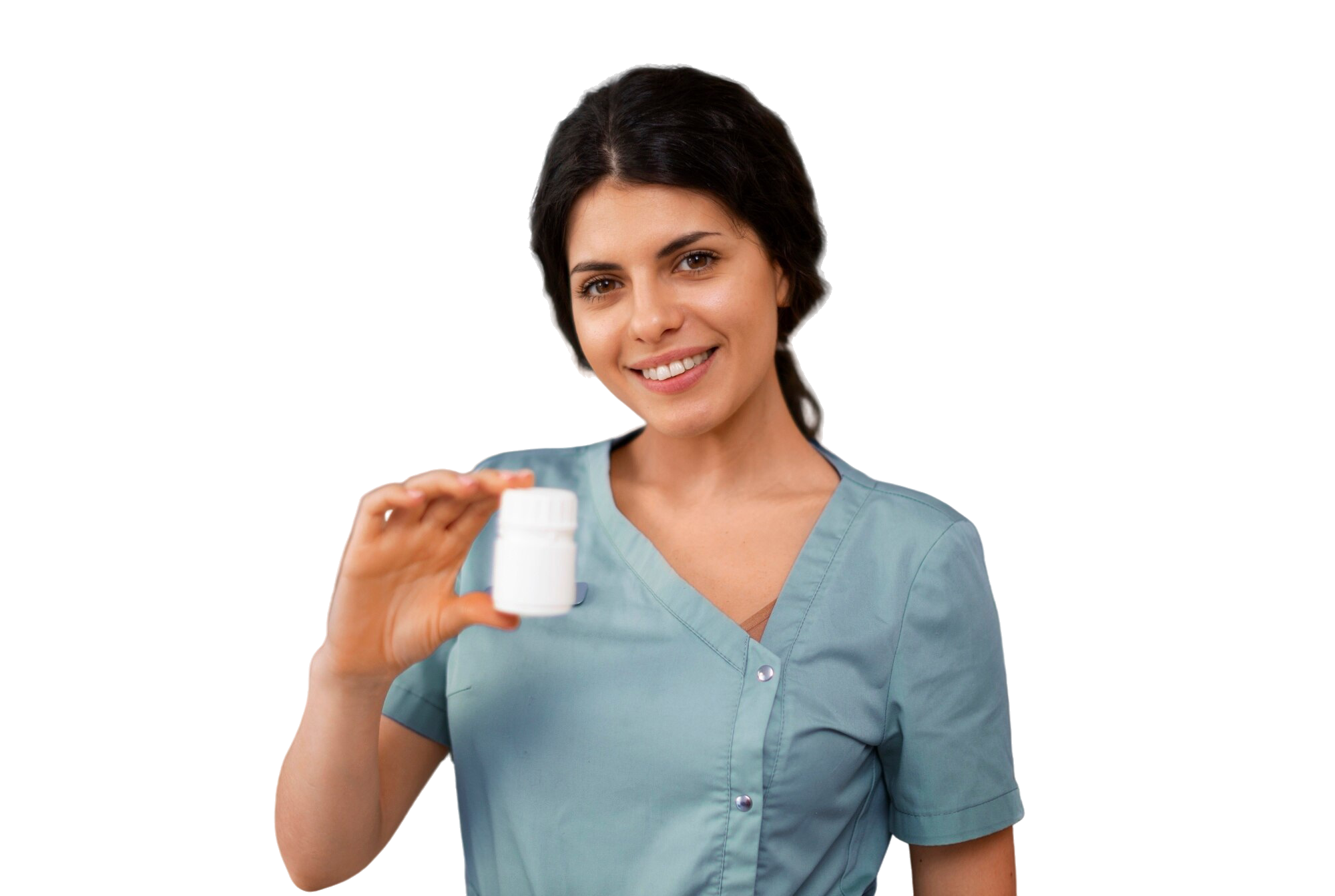As an aquarist, maintaining the health of your fish is paramount. Fishkeeping is not just about aesthetic pleasure; it’s a responsibility to ensure that aquatic life thrives in a carefully controlled environment. One of the tools in your arsenal for fighting fish diseases is antibiotics, and Doxycycline is a well-known option. Antibiotics like Doxycycline play an essential role in managing bacterial infections that could otherwise be detrimental to fish health. In this guide, we’ll delve into what Doxycycline is, how it works, and how to use it effectively to treat fish health issues. By understanding the nuances of its application, you can safeguard the health of your aquatic inhabitants and maintain a vibrant aquarium.
What is Doxycycline?
Doxycycline is a tetracycline-class antibiotic that works by inhibiting protein synthesis in bacteria, making it effective against gram-positive and gram-negative organisms.
Common Uses in Aquariums
| ConditionSymptoms in FishEffectiveness | ||
|---|---|---|
| Fin Rot | Fraying fins, red streaks, tissue loss | ✅ Effective |
| Columnaris (Flexibacter) | Cotton-like lesions, ulcers, white patches | ✅ Moderate–Good |
| Bacterial Gill Disease | Gasping, inflamed gills, lethargy | ✅ Good |
| Ulcer Disease | Open sores on body, loss of scales | ✅ Good |
| Internal Infections | Bloating, pineconing, loss of appetite | ✅ Fair–Good |
📌 Note: Not effective against viruses, fungi, or parasitic infections.
Dosing Guidelines (for Fish)
General Tank Treatment:
- Dose: 10 mg per liter of tank water (or ~38 mg per gallon)
- Duration: 5–7 days
- Frequency: Daily dose with partial water change (25%) before each dose
Oral (mixed in food):
- Dose: 50–75 mg/kg of fish body weight
- Delivery: Mix with fish food and bind with a bit of garlic or gelatin
- Duration: 5–10 days
Important Considerations
| TipWhy It Matters | |
| Quarantine tank | Prevents contamination of display tank’s biofilter |
| Remove carbon filter | Activated carbon will absorb the antibiotic |
| Maintain oxygenation | Antibiotics can reduce beneficial bacteria and oxygen levels |
| Avoid overuse | Prevents antibiotic resistance |
| Test water daily | Monitor ammonia and nitrites, as bacterial die-off may spike levels |
When Not to Use Doxycycline
- For fungal issues (use antifungals like methylene blue)
- For external parasites (use copper, praziquantel, or formalin)
- In tanks with delicate invertebrates (can be toxic to shrimp, snails)
✅ Best Practices for Aquarists
- Always isolate sick fish if possible
- Use pure doxycycline powder (USP/analytical grade preferred)
- Complete the full course to reduce recurrence
- Avoid mixing with other antibiotics unless directed
🧪 How Doxycycline Works
Doxycycline is a broad-spectrum antibiotic in the tetracycline class. It works by inhibiting protein synthesis in bacteria, preventing them from growing and reproducing.
🔬 Mechanism of Action
- Target: Doxycycline binds to the 30S subunit of the bacterial ribosome.
- Blockade: It prevents tRNA from attaching to the mRNA-ribosome complex.
- Effect: This halts the production of essential bacterial proteins, crippling the bacteria.
- Outcome: Bacteria can’t multiply and eventually die off or are cleared by the immune system.
🧠 It’s bacteriostatic – it inhibits growth, rather than directly killing bacteria (bactericidal).
🦠 What Types of Bacteria Does It Work On?
| TypeCoverage | |
| Gram-positive | ✅ Good coverage |
| Gram-negative | ✅ Moderate–Good |
| Intracellular bacteria (e.g. Rickettsia, Chlamydia) | ✅ Excellent |
| Mycoplasma, Spirochetes | ✅ Effective |
🐟 In Aquatic or Veterinary Use
- Used to treat: Fin rot, internal infections, gill disease, ulcers.
- Why it works well: Doxycycline is lipid-soluble, allowing it to penetrate tissues and reach intracellular infections in fish or animals.
⚠️ Resistance & Cautions
- Bacteria can develop resistance if doxycycline is overused or under-dosed.
- Not effective against fungi, viruses, or most parasites
How Does Doxycycline Work?
Doxycycline works by inhibiting protein synthesis in bacteria, which prevents them from growing and multiplying. This antibiotic targets the ribosomes in bacterial cells, which are the sites of protein production. By binding to specific sites on the bacterial ribosome, Doxycycline obstructs the addition of new amino acids to a growing protein chain. This action helps to control the infection and allows the fish’s immune system to clear the bacteria. The immune system can then focus on eliminating the weakened bacteria, restoring balance to the fish’s health.
Doxycycline Dosage for Fish

When using Doxycycline, it is crucial to administer the correct dosage. Dosing accuracy is vital, as both overdosing and underdosing come with risks. Overdosing can harm your fish, while underdosing may not effectively treat the infection. Typically, Doxycycline for fish is available in 100mg tablets or capsules. It’s essential to understand the concentration and formulation of the Doxycycline you are using. The general guideline is to use 1-2 mg of Doxycycline per liter of water. However, specific dosages may vary depending on the severity of the infection and the species of fish. Consulting a veterinarian or a fish health professional can provide tailored dosage recommendations for your specific situation.
Factors Affecting Dosage
Several factors can influence the appropriate dosage of Doxycycline for your aquarium. The size of your fish and the volume of your tank are primary considerations. Larger fish or densely populated tanks may require adjustments in dosage to ensure effective treatment. Additionally, the severity of the infection plays a significant role in determining the amount of antibiotic needed. More severe infections might necessitate a higher dosage or prolonged treatment duration. Lastly, the specific species of fish can affect how they metabolize the antibiotic, influencing the required concentration. Understanding these factors can help you tailor the treatment to the needs of your aquarium.
Monitoring Treatment Progress
Once treatment begins, monitoring the progress of your fish is essential. Observe any changes in behavior, appetite, and physical appearance. Positive signs include increased activity levels, a return to normal eating habits, and visible healing of lesions or sores. Conversely, if there is no improvement or if symptoms worsen, reassessment of the treatment plan is necessary. Sometimes, adjustments in dosage or switching to a different antibiotic may be required. Keeping a detailed log of observations can aid in tracking the effectiveness of the treatment and guide future decision-making.
How to Administer Doxycycline to Fish
Administering Doxycycline can be done in a couple of ways, depending on the type of infection and your aquarium setup. Each method has its advantages and is suited to specific circumstances. Choosing the right administration route can significantly impact the success of the treatment.
In-Water Treatment
For infections affecting multiple fish or the entire aquarium, an in-water treatment is often the most effective. This method ensures that all fish in the tank receive the antibiotic, which is crucial for communal living environments. Dissolve the required amount of Doxycycline in a small amount of warm water, then add it to the aquarium. The warmth helps the antibiotic dissolve thoroughly, ensuring even distribution. Ensure proper water circulation to distribute the antibiotic evenly. Using aerators or filters can aid in the dispersion process, maximizing the treatment’s reach.
Medicated Food
For systemic infections where specific fish are affected, medicated food might be a better option. This method targets individual fish, ensuring they receive the necessary dosage without affecting the entire tank. Crush the Doxycycline tablets and mix them with a suitable fish food. Ensure that the medicated food is consumed by the affected fish to achieve the desired therapeutic effect. It’s crucial to monitor the feeding closely to ensure the fish are eating the medicated food and not spitting it out. This method is particularly useful for finicky eaters or when only a few fish in the tank are affected.
Combination Approaches
In some cases, a combination of in-water treatment and medicated food may be appropriate. This dual approach can cover both communal and individual treatment needs. For instance, if a specific fish is severely infected while others show mild symptoms, using both methods ensures comprehensive coverage. However, caution is advised to avoid overdosing when combining treatments. Adjust the dosages accordingly and consult with a fish health expert to tailor the approach to your aquarium’s requirements.
Precautions When Using Doxycycline
Doxycycline is a powerful antibiotic, but using it incorrectly can lead to serious side effects, reduced effectiveness, or harm to your health (or your fish, in aquaculture settings). Here’s what you need to know:
For Human or Animal Use (Oral/Topical)
1. Avoid Certain Foods & Supplements
- Do NOT take with dairy, calcium, magnesium, or iron—these bind doxycycline and block absorption.
- Wait 1–2 hours before or after consuming these products.
2. Take with Water & Stay Upright
- Doxycycline can irritate the esophagus.
- Always take with a full glass of water and stay upright for 30 minutes afterward.
3. Sun Sensitivity
- Increases risk of sunburn or photosensitivity reactions.
- Avoid prolonged sun exposure and use SPF 30+ sunscreen during treatment.
4. Avoid in Pregnancy or Children <8 Years
- Can affect bone growth and permanently discolor teeth.
- Use only if no safer alternatives exist and under strict medical advice.
5. Complete the Full Course
- Stopping early can cause bacterial resistance and return of the infection.
- Always finish the prescribed duration—even if symptoms improve early.
6. Drug Interactions
- May interfere with:
- Birth control pills (use backup contraception)
- Blood thinners (e.g. warfarin)
- Antacids or seizure meds
🐟 For Aquarists (Aquatic Use)
1. Use in a Quarantine Tank
- Doxycycline can disrupt the nitrogen cycle in display tanks by harming beneficial bacteria.
- Treat infected fish in a separate hospital tank.
2. Remove Activated Carbon Filters
- Carbon will absorb the antibiotic, rendering it useless.
- Remove carbon or chemical filtration during treatment.
3. Dose Accurately
- Overdosing can harm fish or cause resistance.
- Underdosing may be ineffective and encourage bacterial survival.
- Follow proper dosing: ~10 mg/L water or based on fish weight for oral delivery.
4. Increase Aeration
- Antibiotics can lower oxygen levels by altering the microbiome.
- Use air stones or water pumps to maintain oxygenation.
5. Monitor Water Parameters Daily
- Check ammonia, nitrite, and nitrate—especially if fish lose appetite or biofilter is impacted.
- Perform partial water changes before redosing.
📌 Final Reminders
| Do ✅Don’t ❌ | |
| Take with water | Take with milk or antacids |
| Finish full course | Stop early due to symptom relief |
| Protect from sunlight | Stay outside unprotected |
| Use separate tank for fish | Dose antibiotics in display tank blindly |
Precautions When Using Doxycycline
While Doxycycline is generally safe for use with fish, there are some precautions to keep in mind. Being aware of potential side effects and interactions can help mitigate risks and ensure successful treatment outcomes.
Monitor Water Quality
Antibiotics can impact the beneficial bacteria in your aquarium’s biological filter. These beneficial bacteria are crucial for breaking down waste products and maintaining a stable environment. Regularly monitor ammonia and nitrite levels during treatment and perform water changes as needed to maintain optimal water quality. Elevated levels of these compounds can stress fish and complicate the treatment process. Additionally, consider using a water conditioner to neutralize harmful substances and support a healthy aquatic environment.
Treatment Duration
The typical treatment duration with Doxycycline is 5-10 days, but it may vary depending on the severity of the infection. Adhering to the recommended duration is crucial for ensuring the complete eradication of bacteria. Follow the instructions on the packaging or consult with a fish health expert for specific guidance. Completing the full course, even if symptoms improve, prevents the resurgence of infection and the development of resistance. Documenting the treatment duration and observing the fish’s response can provide valuable insights for future reference.
Observe Fish Behavior
Watch your fish closely during treatment. Behavioral changes can provide early indicators of the treatment’s success or potential complications. If you notice any adverse reactions, such as increased stress or unusual behavior, consider discontinuing treatment and consulting with a professional. Stress responses might include erratic swimming, gasping at the water surface, or hiding. Early intervention can prevent further harm and guide adjustments in the treatment plan. Keeping a detailed record of observations can aid in communicating effectively with a fish health expert.
Alternatives to Doxycycline

While Doxycycline is effective, it’s not the only option for treating fish diseases. Exploring alternative antibiotics can provide options tailored to specific bacterial strains. Other antibiotics, such as Erythromycin or Kanamycin, may be suitable alternatives depending on the specific bacteria involved. Erythromycin, for example, is effective against gram-positive bacteria, while Kanamycin is known for its action against gram-negative strains. Always identify the bacterial strain before selecting an antibiotic to ensure effective treatment. Conducting bacterial cultures or consulting with a fish veterinarian can aid in identifying the most appropriate antibiotic for your situation.
Natural Remedies
In addition to synthetic antibiotics, some aquarists opt for natural remedies to combat bacterial infections. These may include herbal extracts, such as garlic or neem, known for their antimicrobial properties. While natural remedies can be less potent than antibiotics, they offer an alternative for minor infections or as preventive measures. However, their efficacy can vary widely, and they should be used with caution. Always research and consult with experts before opting for natural treatments to ensure they do not harm your fish or disrupt the aquarium ecosystem.
Preventive Measures
Prevention is always preferable to treatment, and implementing preventive measures can reduce the need for antibiotics. Maintaining optimal water quality, providing a balanced diet, and minimizing stress are key components of fish health. Regular water changes, proper filtration, and avoiding overcrowding contribute to a stable environment. Additionally, quarantine new fish before introducing them to the main tank to prevent the introduction of pathogens. By focusing on prevention, you can reduce the likelihood of bacterial outbreaks and the need for antibiotic interventions.
The Importance of Responsible Antibiotic Use
Using antibiotics responsibly is crucial to prevent the development of resistant bacteria. Antibiotic resistance poses a significant threat to both aquatic and human health, making prudent use essential. Here are a few guidelines to follow:
- Use Antibiotics Only When Necessary: Avoid using antibiotics as a preventative measure. Only treat confirmed bacterial infections. Overuse can lead to resistance, reducing the effectiveness of treatments over time.
- Complete the Full Course: Even if your fish appear to recover, complete the full treatment course to ensure the bacteria are fully eradicated. Incomplete treatment can lead to relapse and promote resistance development.
- Avoid Overuse: Overusing antibiotics can lead to resistance, making it harder to treat infections in the future. Limit antibiotic use to situations where it is genuinely needed, and explore alternative treatments when appropriate.
Conclusion
Doxycycline is a valuable tool for aquarists to treat bacterial infections in fish. By understanding its uses, proper dosage, and administration methods, you can ensure the health and wellbeing of your aquatic friends. Responsible use of antibiotics not only addresses current infections but also helps maintain a healthy aquarium environment and prevent the development of resistant bacteria. With this guide, you are now better equipped to handle fish health issues with confidence. Prioritize the health of your fish by staying informed and proactive in disease management.
Keep your fish thriving, and enjoy the beauty and tranquility of your aquarium. A healthy aquarium is a testament to your dedication and care, providing a serene and vibrant living space for your aquatic companions.


